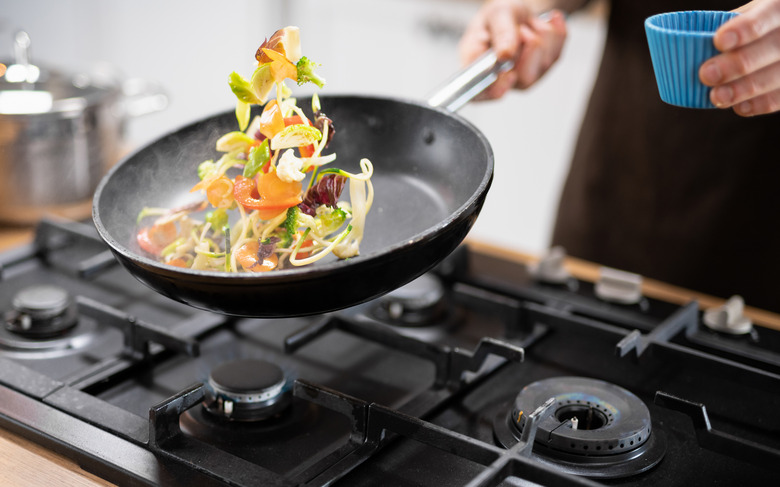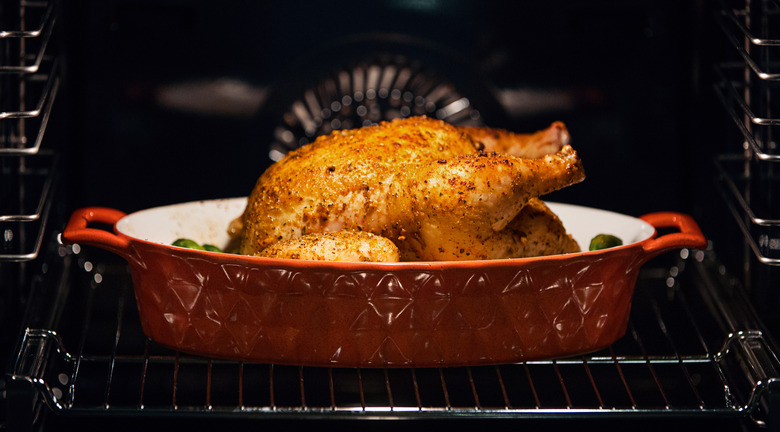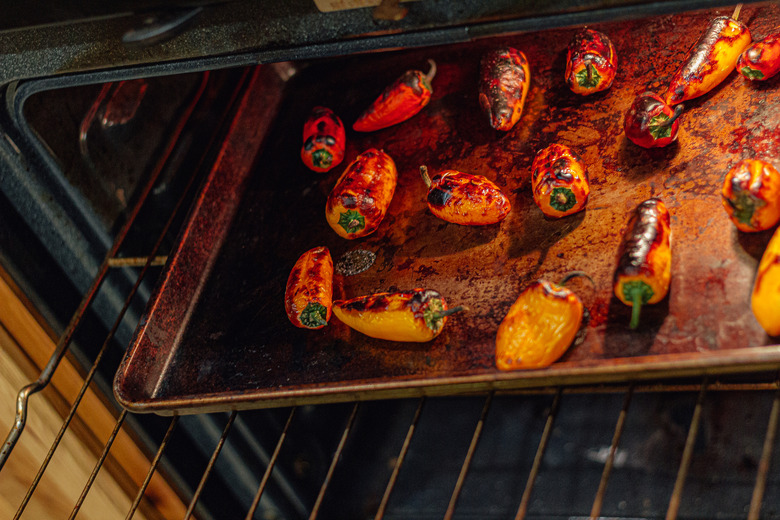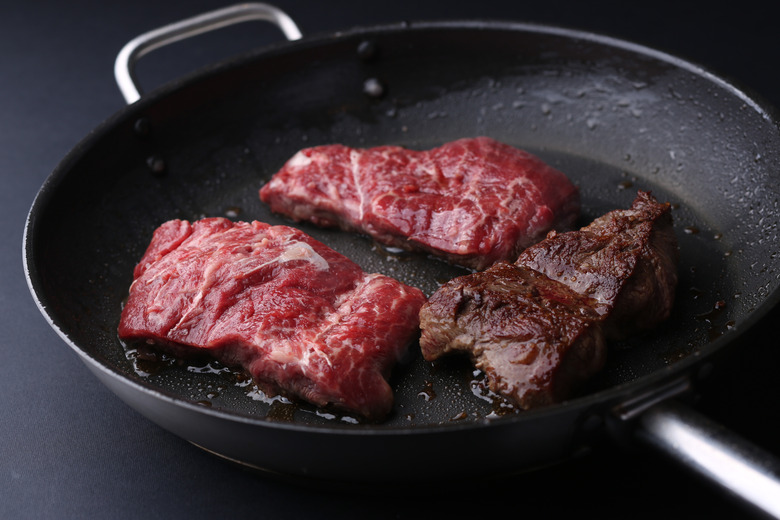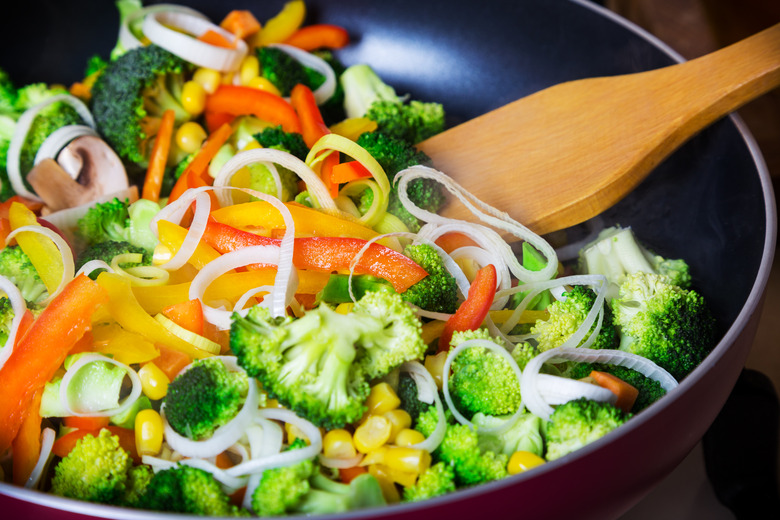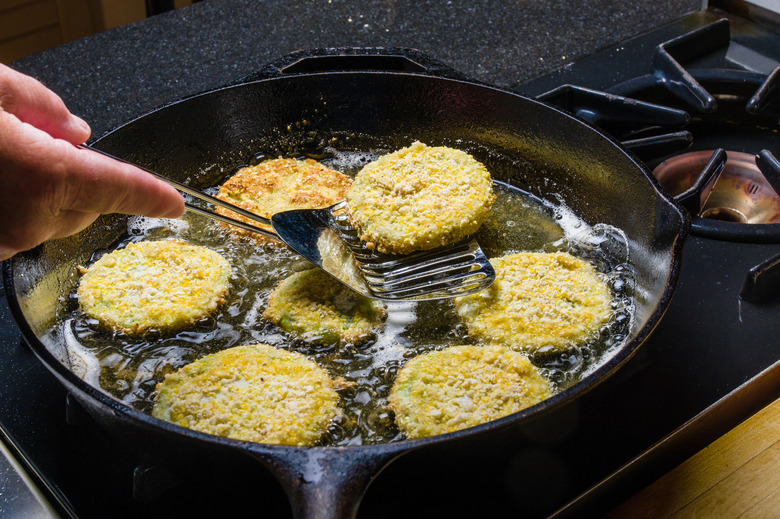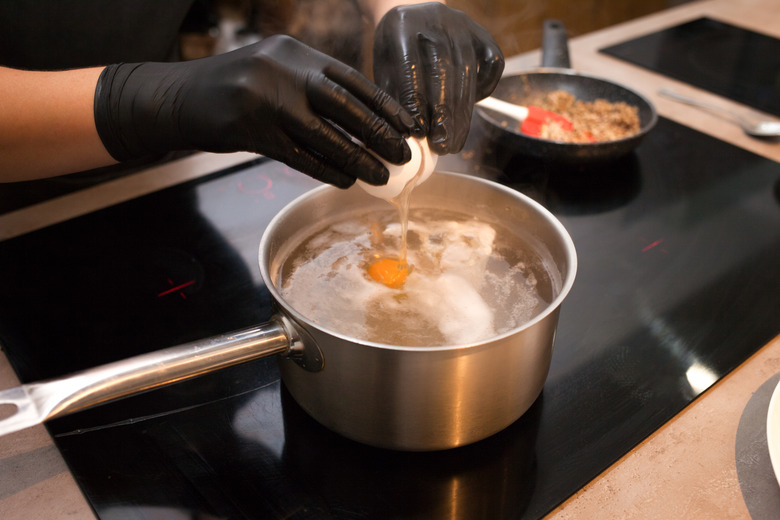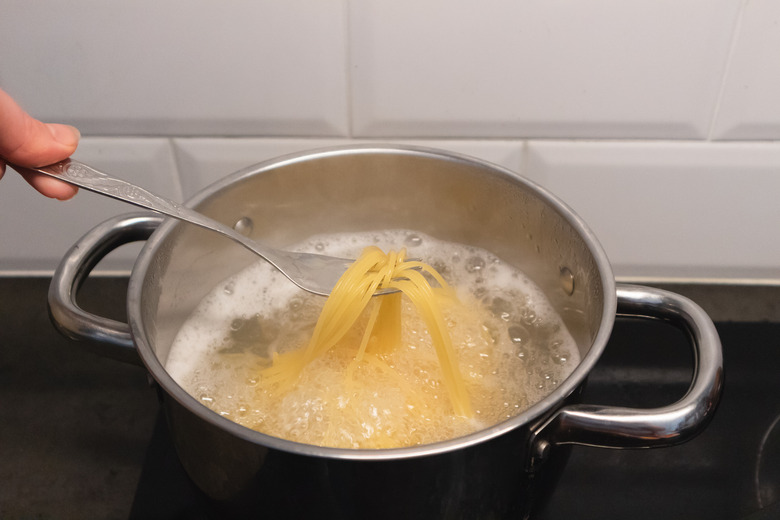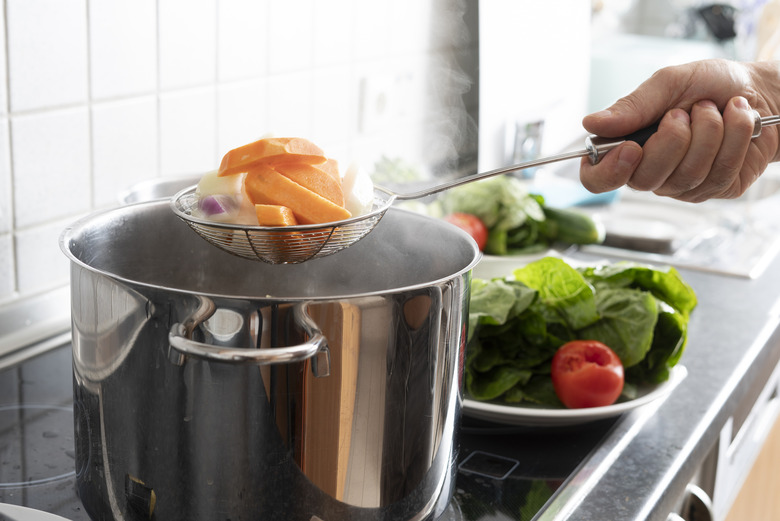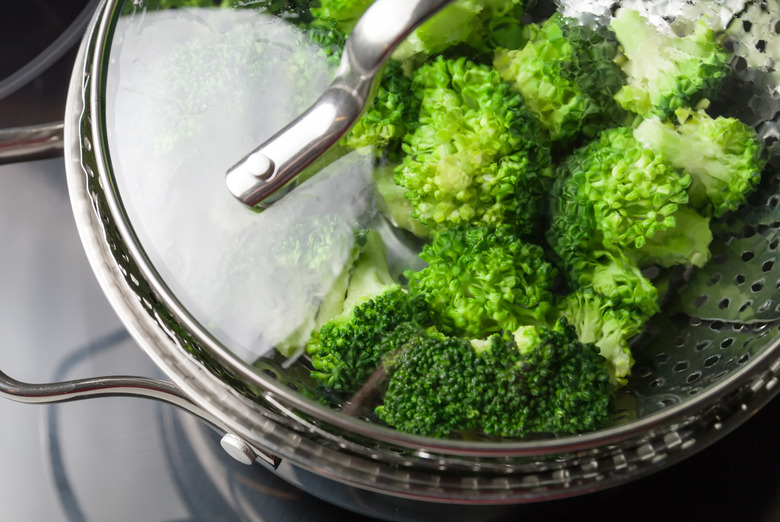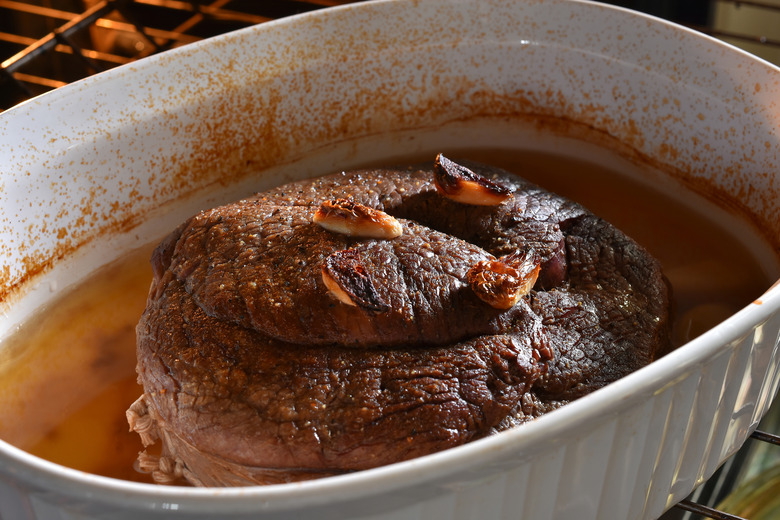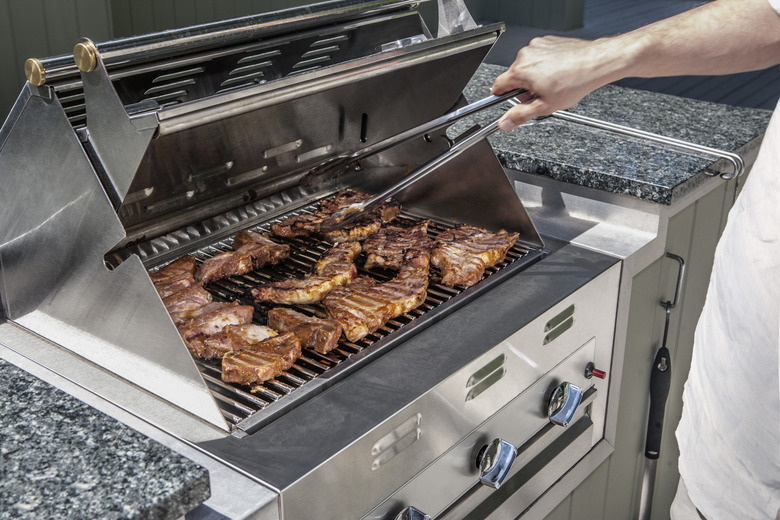Basic Cooking Methods You Need To Know
If you're on your own for the first time and don't have much experience in the kitchen, learning how to cook for yourself can feel incredibly overwhelming. You read a recipe; it tells you to sear, saute, steam or blanch something, but you're not entirely sure what any of that means. Here, we break down the basic cooking methods and share what foods are best suited for each method.
Baking
Baking is a dry-heat cooking method most commonly done in the oven. The dry, indirect heat from baking cooks all sides evenly and gets the exterior of a food item brown while keeping the inside moist. Though there are exceptions, baking tends to be at a medium oven temperature. This method most commonly refers to breads, cakes, cookies and other pastries, though it can also refer to meats and vegetables, such as potatoes and chicken breast.
Roasting
Like baking, roasting is a dry-heat method commonly done in the oven in which dishes are cooked until golden brown and tender. Roasting typically refers to meats and vegetables, and can either be done at low temperatures (think: turkey, prime rib) or high temperatures (think: roasted Brussels sprouts and other vegetables).
Broiling
Broiling is similar to grilling, except the heat source is extremely hot and comes from the top. It works well for getting the top of a dish brown and crispy, like meatloaf, glazed salmon or the cheese on top of mac and cheese. It is usually done in an oven by adjusting the setting to broil. The process happens very quickly, so watch your food carefully when broiling so it does not burn.
Searing
Searing is a quick-cook method done with minimal amounts of fat over high heat. Searing foods gives them a brown, caramelized outside without fully cooking the interior. Think searing a piece of tuna so it has a browned exterior and a medium-rare interior, or cooking steak in a cast-iron skillet.
Sautéing
Sautéed foods are cooked in a thin layer of fat (oil, butter, bacon fat) over medium-high to high heat, usually in a frying pan on the stovetop. Foods are cooked until tender or browned. Green vegetables, like Swiss chard, asparagus and broccoli, are particularly delicious when sauteed, as is fish. Sautéing is another quick-cooking method, so keep an eye on your pans and flip and stir your food as it cooks.
Pan-Frying
Pan-frying is done by adding enough fat to a hot pan so that the pan is coated. This method tends to be at a lower heat than sauteing or searing. Pan-fried foods tend to be larger than those you sauté. Examples include crab cakes or fried green tomatoes, which are cooked until golden brown on one side and then turned over so the other side can brown.
Deep-Frying
Deep-frying occurs when food is completely submerged in hot fat. The result is a crispy, golden-brown exterior and a fully cooked interior. Fried chicken, of course, is a classic example. Before you try this method, make sure you read our full guide about frying food at home.
Poaching
Poached food should be completely submerged in liquid that is between 160 and 180F. The food item remains in the liquid until tender and fully cooked through. This is a good cooking method for delicate food. Poaching is one of the essential ways to cook eggs but is also used for chicken, fish and fruit like pears.
Simmering
Simmering is another moist-heat cooking method, but the liquid is heated to a higher temperature than poaching — tiny bubbles should appear on the surface. Soups and stews are frequently cooked over a long period of time at a simmering temperature, as are Bolognese and other sauces.
Boiling
Typically, foods are boiled in water in a pot or deep pan after the water reaches a boiling temperature of 212F. Though there are exceptions, foods are completely submerged in the boiling liquid and cooked until tender, then drained. Commonly boiled foods include pasta, potatoes and eggs in the shell.
Blanching
Blanching is similar to boiling. Bring a pot of liquid to a rolling boil, submerge your food and cook it. The difference here is that food is only in liquid for a matter of moments until it's partially cooked, then it's immediately submerged in an ice bath to stop the cooking process. Vegetables, such as asparagus, green beans, broccoli and carrots, are most frequently blanched.
Steaming
To cook an ingredient with steam, first boil liquid in a pot, then place a separate vessel, usually a steamer basket, over the boiling liquid. Steam from the boiling liquid cooks the food, which does not come in contact with the liquid. Vegetables like broccoli, carrots or cauliflower are often steamed, but the cooking method also works very well for seafood, such as salmon or crab legs.
Braising
Braising is a combination cooking method that first involves sautéing or searing an item in a small amount of hot fat to brown the exterior, then simmering it in liquid over low heat for a long cooking period until tender. Braised foods include pot roasts, short ribs and lamb shanks.
Grilling
Grilling is a favorite summer pastime and an easy skill to pick up. When grilling food, you cook on top of a grate. The heat source — either coals or flames from a gas line — comes from the bottom. Food is cooked by heating the grill grates, which gives ingredients the charred, grilled lines. This method is pretty easy, especially for staples like burgers, chicken and steaks. You just need to make sure you flip your food while it's cooking. Before you start learning how to grill, make sure your grill is cleaned and properly prepped for the season. Then test your skills with our 50 best grilling recipes.
More from The Daily Meal:
Bad Cooking Habits You Need to Stop Now
Are Nonstick Pans Safe? And Other Kitchen Tool Questions, Answered
How to Stock Your Pantry (and Take It to the Next Level)
